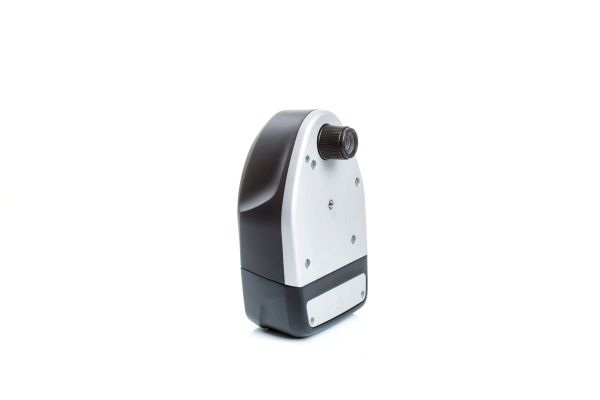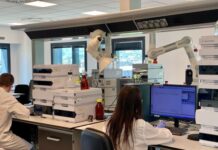Spectral imaging is the detection of light reflected by the crop with the use of specialized sensors. It is measured in spectral bands. The higher the number of bands the higher the accuracy, the flexibility and information content. Spectral imaging is widely used now in agriculture and precision farming.
Currently satellites and drone fitted cameras are using multispectral imaging technology. Multispectral technology (5–7 bands) can offer a good overview of crop such as overall growth and NDVI, but fails to do so in an integrated scalable way and to tackle more complex problems such as weeds, pests, diseases and PK deficiency. Hyperspectral technology used by Gamaya, with its higher detection capabilities due to higher number of spectral bands can develop solutions for almost any problem encountered in the field. Hyperspectral imaging in agriculture allows to significantly extend the range of farming issues and applications that can be addressed using remote sensing.
Hyperspectral imaging in agriculture
Almost every farming issue (weeds, diseases, nutrient deficiency, etc.) changes a physiology of the plant, and therefore affects its reflective properties. Healthy crop and crop that is affected by disease reflect the sun light differently. Using hyperspectral imaging it’s possible to detect very small changes in the physiology of the plant and correlate it with spectrum of reflected light.
Unique hyperspectral camera, developed by Gamaya, has 41 spectral bands, which allows us to make 41 measurements of spectrum versus 5–7 measurements done using multispectral cameras. This results in a significantly higher information content of the data acquired using our hyperspectral imaging camera. High spectral resolution of our data allows for detection and identification of inferring biological and chemical processes in crops, which opens up a full range of applications in precision agriculture.
Senop HSC-2, next generation fast and high resolution Hyperspectral Camera for smart agriculture applications.
The new HSC-2 is a result of long experience from 1st generation Rikola hyperspectral camera and based on state of the art Fabry Perot Interferometer technology. FPI technology provides unrivalled benefits when fast global shutter type of true pixel images are in question.
The HSC-2 can take up to 149 spectral frames per second and up to 1000 freely selectable narrow bands in true pixels without any interpolation.
Aki Korhonen, Senop´s CEO said that they were aiming to take a leap in the hyperspectral technology and create a golden standard to be used in any research fields or commercial applications where the data quality and quantity is determinant.
He further added that they have managed to achieve their goal and HSC-2 is a versatile tool providing a revolutionary value no matter it´s used for example in smart agriculture with moving UAV´s or stand alone application like food industry or medical surgerys.
Matti Rautiainen, Senop´s sales director echoed his sentiments adding that the past couple of years the interest and awareness to use hyperspectral data has been increased heavily amongst the researchers and even more in commercial sector. The HSC-2 camera, he asserts, is the tool to help create a better world
Long experience of optronics
Senop HSC-2 optics has been developed and manufactured in-house in Finland. Long experience of combining optical components with electrical platforms has made Senop a trusted partner in many different fields. Quality and performance standards from defence and security industry reflects straight to HSC-2 camera.
Main features include but are not limited to: spectral range VIS-NIR, global shutter frame camera, true 1 Mpixels, fast frame rate, up to 149 fps and it up to thousand spectral bands. The device is also not only less than 1kg, but is also fitted with internal GPS and IMU with external antenna Glonass and Galileo and Gyroscope and 3 axis accelerometer-respectively. Senop HSC-2 optics boasts easy focus from centimeters to infinite and standard ENVI datacube with open API.









